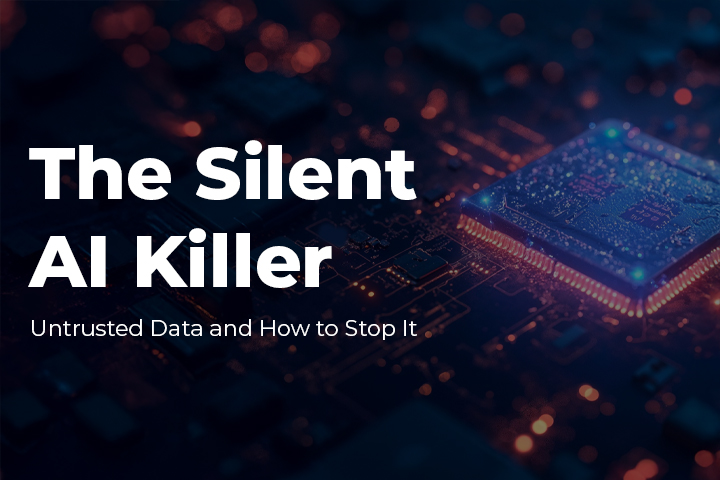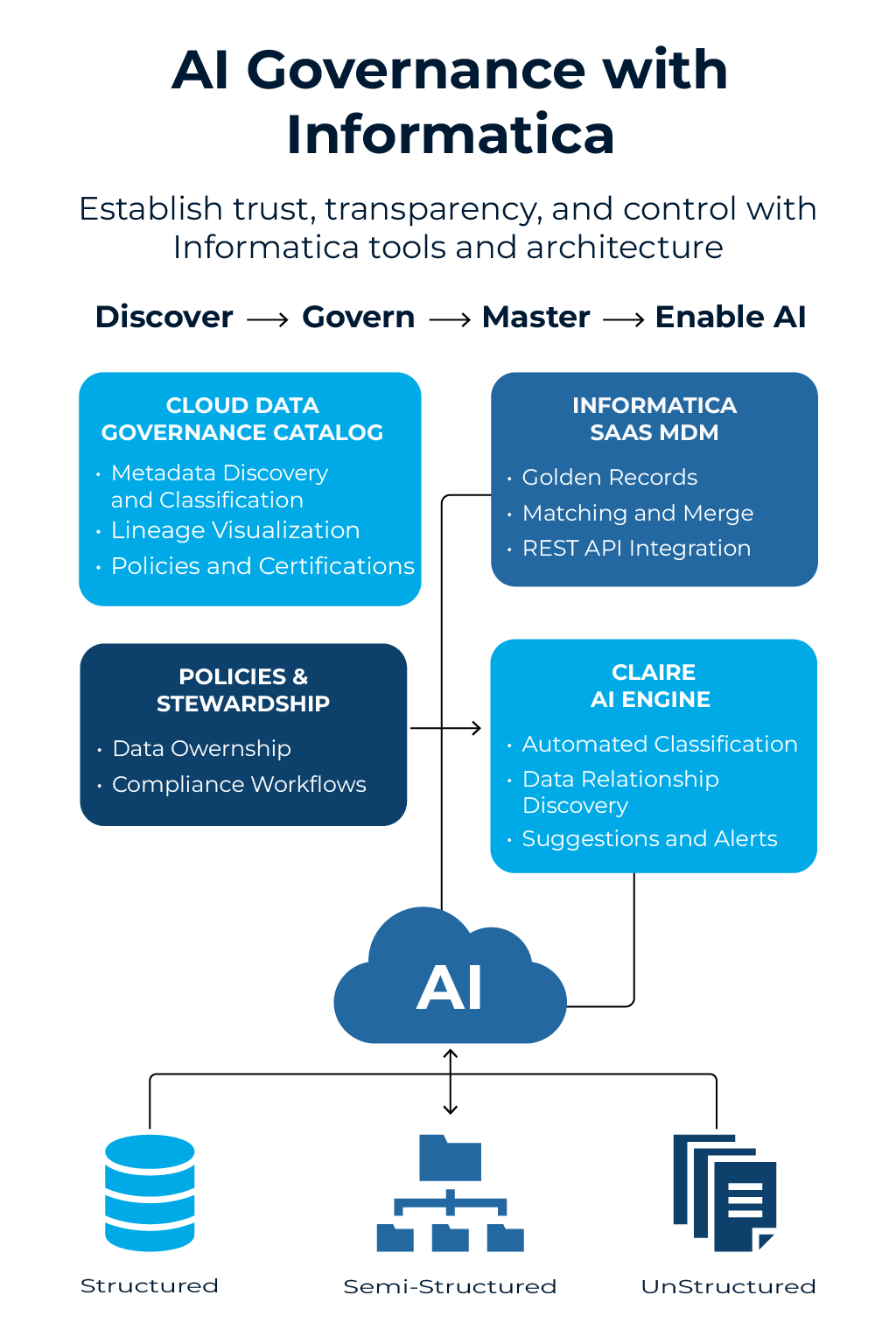Introduction
In an era marked by innovations such as ChatGPT, GenAI, and autonomous agents, data serves as the essential fuel powering artificial intelligence. However, it’s crucial to acknowledge that leveraging AI technology based on unregulated, fragmented, and untrusted data is not only ineffective but also poses a significant risks. From hallucinations to regulatory fines, organizations are increasingly aware of the risks associated with deploying AI systems without proper governance. This is where Informatica’s AI governance ecosystem proves its value, offering a robust trio of Cloud Data Governance and Catalog (CDGC), Informatica SaaS MDM, and the CLAIRE AI Engine.

Why AI Governance Isn’t Just a Checkbox
- Governance doesn’t slow you down, it accelerates your AI journey forward with confidence and clarity
- It’s the difference between engineering a race car with precision and durable materials, and assembling one with quick fixes and wishful thinking
- With platforms like Informatica CDGC and SaaS MDM, you can achieve:
- Data Reliability
- Model Transparency
- Pipeline Efficiency
- Compliance without Chaos
Explore Informatica’s Leading Solutions for End-to-End AI Governance
1. CDGC: Discover, Classify, and Govern at Scale
Informatica’s Cloud Data Governance and Catalog (CDGC) acts as both the map and the GPS for your data landscape. This powerful solution enables organizations to:
- Automatically discover and classify data across the enterprise using the intelligence of CLAIRE
- Assign data owners, enforce governance policies, and apply certifications for accountability and control
- Visualize complete, end-to-end data lineage to ensure that all model inputs remain transparent and traceable
Case in Point
CDGC was used to scan, classify, and curate datasets originating from electronic health records (EHRs), insurance claims, and connected IoT medical devices. Within a matter of days, achieved 80% metadata coverage, significantly enhancing the capabilities of their AI models for predicting patient outcomes.
2. SaaS MDM: One Golden Record to Rule Them All
AI models are only as effective as the quality of their inputs. When customer, product, or supplier records are fragmented or inconsistent, it leads to poor insights and flawed decision-making.
Informatica’s cloud-native SaaS Master Data Management (MDM) solution helps solve this by:
- Creating trusted, unified 360° views across customer, product, supplier, and other critical domains
- Using machine learning and rules-based matching techniques to intelligently unify and maintain data integrity
- Seamlessly integrating with Generative AI tools and APIs to ensure accurate, consistent data to enable AI systems
Case in Point
A leading global bank successfully unified customer identities across multiple touchpoints, including CRM, mobile apps, and online portals. As a result, they achieved a 35% boost in AI personalization accuracy by building GenAI models on top of reliable and trusted customer 360 data.
3. CLAIRE: Your Smart Data Steward
CLAIRE is the AI core of the Informatica ecosystem, providing more than just automation. It offers augmentation capabilities, including flagging policy violations, suggesting lineage and relationships, and monitoring schema changes that may disrupt AI pipelines.
Case in Point
A leading retail customer utilized Informatica’s CLAIRE engine to continuously monitor upstream schema changes across data sources, effectively preventing silent failures in their Generative AI-powered product recommendation engines and ensuring uninterrupted performance.
Architecture: How It All Comes Together

With Informatica, your AI is not isolated. It’s empowered by an integrated ecosystem that delivers:
- CDGC discovers and classifies the data
- Policies and stewardship ensure compliance
- SaaS MDM unifies and enriches the data
- CLAIRE brings everything to life
Real Business Impact
- Achieved 80% faster metadata classification, helping teams understand and access data more quickly
- Improved AI model precision by 30–40%, leading to more accurate and trustworthy results
- Enabled immediate audit readiness to meet HIPAA, GDPR, and SOX compliance requirements
- Minimized model risk and bias through complete data lineage and clear explainability
- Ensured AI pipelines remain stable and transparent, eliminating silent failures
Final Words: Build Your AI Strategy with Trust and Governance
Just as you wouldn’t rely on an autopilot without a reliable compass to guide the way, you shouldn’t place your trust in AI systems without robust governance in place. By utilizing Informatica CDGC, SaaS MDM, and the intelligence of CLAIRE, organizations can now prioritize trust, transparency, and control into their AI strategy.
Let’s Connect
With 8+ Years of Partnership along side Informatica, we’ve helped enterprises across Healthcare, Finance, Retail, and Manufacturing sectors in building AI-ready data architectures using Informatica’s industry-leading solutions. If you’re looking to explore how these capabilities can be brought to your organization, feel free to connect with us or leave a comment below to start the conversation.





